Welcome to Citizen Scholar! Since launching four months ago we’re reaching hundreds of people a week, so we thank you for your support. If you enjoy our writing on civic virtue and individual excellence, we humbly ask you to share Citizen Scholar with your family members and friends who may enjoy it. The contents of the audio and text formats are identical and meant to accommodate your preferences. Please let us know if you have any feedback - we’re always looking for ways to improve!
Introduction
“Every day, the New York Times carries a motto in a box on its front page. “All the News That’s Fit to Print,” it says. It’s been saying it for decades, day in and day out. I imagine that most readers of the canonical sheet have long ceased to notice this bannered and flaunted symbol of its mental furniture. I myself check every day to make sure that the bright, smug, pompous, idiotic claim is still there. Then I check to make sure that it still irritates me. If I can still exclaim, under my breath, why do they insult me, and what do they take me for and what the hell is it supposed to mean unless it’s as obviously complacent and conceited and censorious as it seems to be, then at least I know that I still have a pulse. … I credit this daily infusion of annoyance with extending my life span.”
-Christopher Hitchens, Letters to a Young Contrarian, 2001
The New York Times is a victim of its own great reputation. Conventional wisdom holds it up as the gold standard of American journalism - an objective and comprehensive portrayal of important news. A large portion of Americans - especially elite Americans - perceive it to be a cut above other journalistic institutions. It is known for breaking important stories and bringing readers the facts in an objective, sober tone - earning it the nickname The Gray Lady.
In The Gray Lady Winked, American journalist Ashley Rindsberg argues that this picture is incomplete. In his view, the reputation won in the late nineteenth and early twentieth century propelled the NYT to a position that it has abused for at least the last century. From the commanding heights of American journalism, where its personnel acted as scrutinizers who were themselves seldom scrutinized, key NYT personnel occasionally acted as if they were above truth. Whereas they should have been writing the rough draft of history, personal biases, hubris and incompetence periodically led them to jump to a final version. Rindsberg doesn’t nitpick by pointing out mistakes on small stories. He supports his argument with numerous case studies that are hard to argue with. These include several examples of historical misreporting across Nazi Germany & the Holocaust, the atomic bombing of Japan, and more recently, the Arab-Israeli conflict among many others.
Getting the Big Things Wrong
The NYT has had stretches where it misrepresented or obscured some of the most important stories to readers for extended periods of time. Rindsberg returns repeatedly to the role of the Ochs-Sulzberger family that has controlled the paper since 1896. The family continues to control the paper via a dual-class stock structure – only the family has access to controlling shares that are independent of economic interest. Glaring errors have tended to persist when they align with opinions of family publishers that have succeeded Adolph Ochs.
This trend was visible in the run-up to World War II. The publisher fell for widespread elite opinion favorable to the Soviet Union and credulous to its government’s propaganda. Poor reporting followed suit. Star NYT reporter Walter Duranty used government sources to smooth over state repression and the horror of the Holodomor – Stalin’s intentional starvation of millions of Ukrainians because some of them resisted collectivization. In what would become a parallel trend, Duranty won the paper a Pulitzer Prize for his shoddy work. External pressure would later force the paper to hire an outside consultant to determine if the paper should return the Pulitzer. The consultant recommended returning the prize, but the publisher intervened to persuade the NYT’s editors not to do so. The NYT’s 1980 obituary for reporter Ella Winter also ignored that she had been a formal communist agent for years while churning out articles about the Soviet Union for the paper. Reporters at the NYT directly contributed to the public’s late awareness of Soviet communism’s horrors and to policymakers recognizing the Soviet Union in 1933.
Rindsberg also links the publishing family’s biases and stewardship to catastrophic reporting of the Axis Powers before and during World War II. The paper’s reporting played down Hitler’s antisemitism and bought into his propaganda, making Germany look especially glamorous in the 1936 Olympics. When some NYT staff protested to the publisher about Berlin bureau chief Guido Enderis’ coverage of Nazi Germany, they were threatened into silence. Enderis turned out to be a Nazi collaborator.
Additionally, the NYT even relied on official sources to misreport that the war began in 1939 when Poland invaded Germany. In fact, the opposite was true (Germany invaded Poland), but Nazi forces had staged a false flag operation to create the contrary appearance. As the Holocaust intensified from 1942 on, the NYT reported true stories but deemphasized and relegated them to later pages of the newspaper. Both Rindsberg (the author) and the Ochs-Sulzberger family (the controlling shareholders / owners of the NYT) are Jewish, but the former directly attributes the failure to inform the American public about the Holocaust to the latter. Evidently, the NYT’s publisher at the time held certain opinions that led the paper to downplay harm against Jews and even forbid using the word “Jew” unless there was absolutely no alternative. Among the key views Rindsberg cites is that the publisher subscribed to a form of reform Judaism that emphasized assimilation and was against Zionism. Due to financial troubles born of the Great Depression, he also wanted to tow the line on a portion of the reading public’s pre-war isolationism and wartime antisemitism. Thus a concerted effort was made to avoid the NYT being seen as a Jewish-focused publication in the US.
These examples are jarring, but the trend of the NYT badly missing on major stories while continuing to pat itself on the back has never really ended. The paper lionized Cuban leader Fidel Castro and built up his image to the world while ignoring his murderous repression for years. Castro even thanked them for it in person on visits to New York City. According to Rindsberg, due to lazy reliance on cozy relationships with government sources as well as the influence of the Ochs-Sulzberger family, the NYT would also go on to:
Conspire with the US government to downplay the existence of radiation sickness after the nuclear bombings of Hiroshima and Nagasaki in Japan (1945)
Misinform the public about the Vietnam War until it was too late
Jump the gun on reporting the killing of a Palestinian youth in 2000, creating a narrative that led to more violence in the Middle East
Rely on government sources to assure the public that Iraq had weapons of mass destruction before turning against the war and slanderously portraying US military personnel, often by inventing stories and exaggerated statistics of servicemembers suffering from mental / physical injuries or of being rapists and murderers following service
The Gray Lady Winked contains these examples and more; it’s worth reading the book to understand the complicated mechanisms that led to these huge errors in major stories. The book also lays out the terrible consequences of this misreporting being injected into the public debate as objective truth from the Gray Lady.
Lessons Never Learned
The NYT hasn’t exactly learned humility from its mixed history, and much of the public hasn’t been informed enough about its historic unreliability to interpret NYT reporting accordingly. Rindsberg brings the reader what he views as the NYT’s latest and ongoing big mistake: the 1619 Project and “woke” reporting. Rindsberg criticizes this turn to activism rather than journalism. He also criticizes the historical accuracy of the 1619 Project - which seeks to reframe American history as being conceived in slavery in 1619 rather than in liberty in 1776 - and notes professional historians of the left and right that have denounced it as well. We’ll leave judgement of the well-known 1619 Project to readers of Citizen Scholar.
While we understand and appreciate that objective journalism is likely impossible to achieve – after reading & reviewing The Gray Lady Winked thoroughly, it makes us question the trust we can place in the NYT reporting in how current events are unfolding around the world - whether it be what Russia is doing on Ukraine’s border this week or a group of journalists attempting to rewrite history with narrow input from historians. Like most people, we would love to have a single, unbiased source of news that finds the most relevant stories and relays them in an objective manner. It’s unlikely such a source has ever existed, and the New York Times certainly isn’t it. Ironically, there’s some relief in NYT reporters openly declaring that they’ve adopted what the author describes as a new religion based on critical theory. It’s only regrettable that they’ve burned the careers of journalists like Bari Weiss and that some still accept their journalism as the only objective truth source.
The uncomfortable reality is that, to get the clearest picture of what’s going on in the world, one has to synthesize a variety of sources. And we’re not referring to the major newspapers and TV stations, because many of them re-report what the NYT says. In this way, awareness resembles physical fitness or professional / academic achievement – it requires real effort and work. The ultimate equilibrium has to come from absorbing a greater diversity and quantity of information, and allowing for a greater margin of error or uncertainty. Certainty about all important events is impossible because news sources of various stripes are skewed by human fallibility and by their ownership / reporters’ biases, often more than even the NYT is. With the NYT’s myth of the one-stop-shop for real news dispelled, this journey of discovery and knowledge can begin.
All the best,
The Citizen Scholar Team
P.S. If you have any suggestions on better news alternatives, especially fellow Substackers, kindly send them our way.
Newsletter Recommendation: Pulse
Pulse is a tech-focused weekly newsletter that curates the top headlines across tech, media and business. Behrouz saves you time and cuts out the noise. You can subscribe for free below!
If you made it this far & enjoyed the post, could you please let us know by giving the heart button below a tap? Thank you!









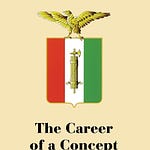
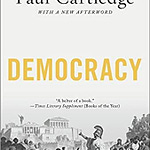

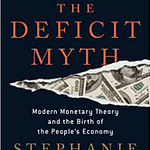
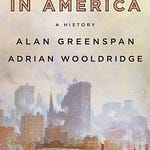
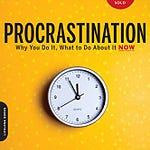
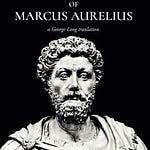
Discussion #24: The Gray Lady Winked: How the New York Times's Misreporting, Distortions and Fabrications Radically Alter History, by Ashley Rindsberg